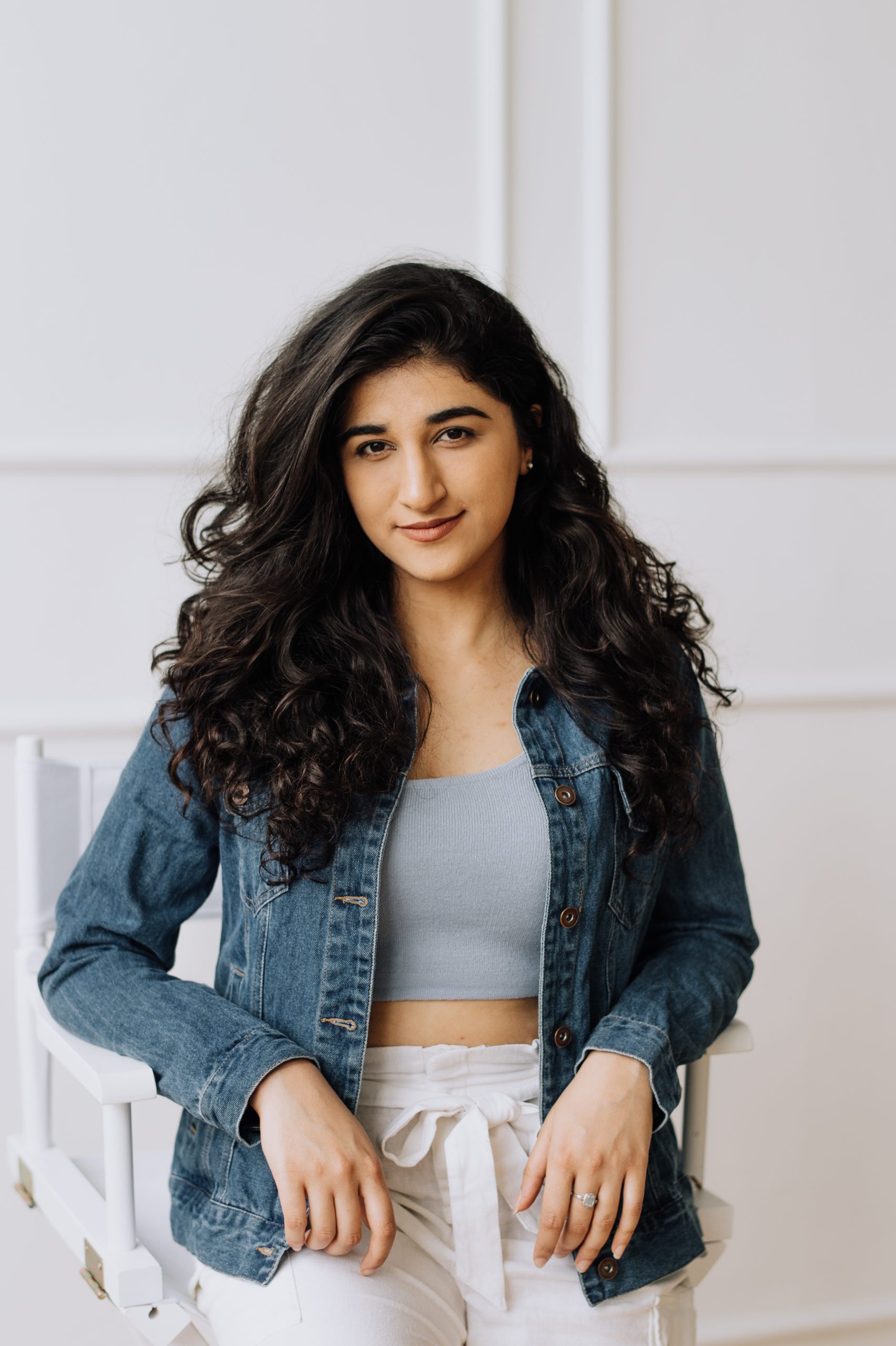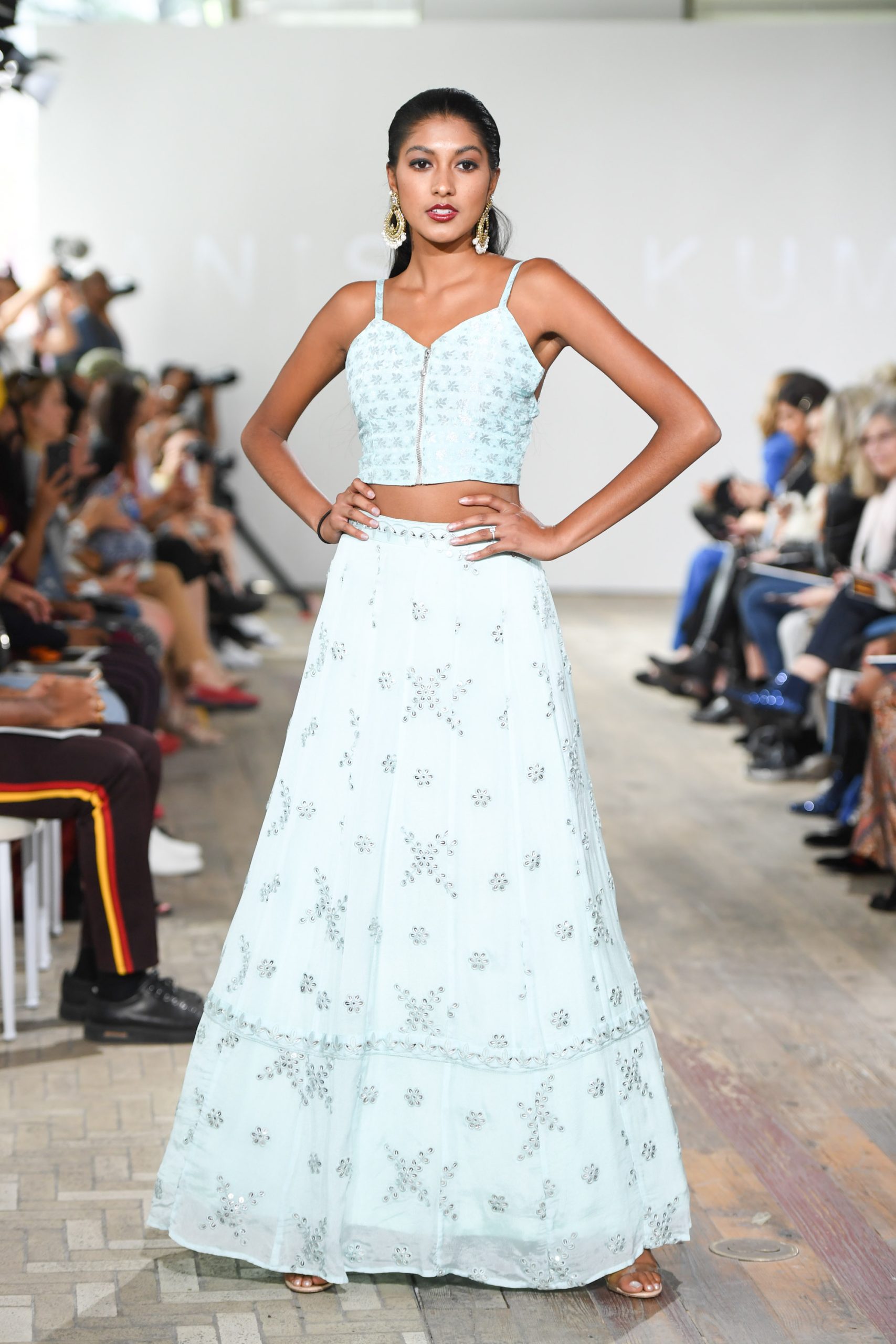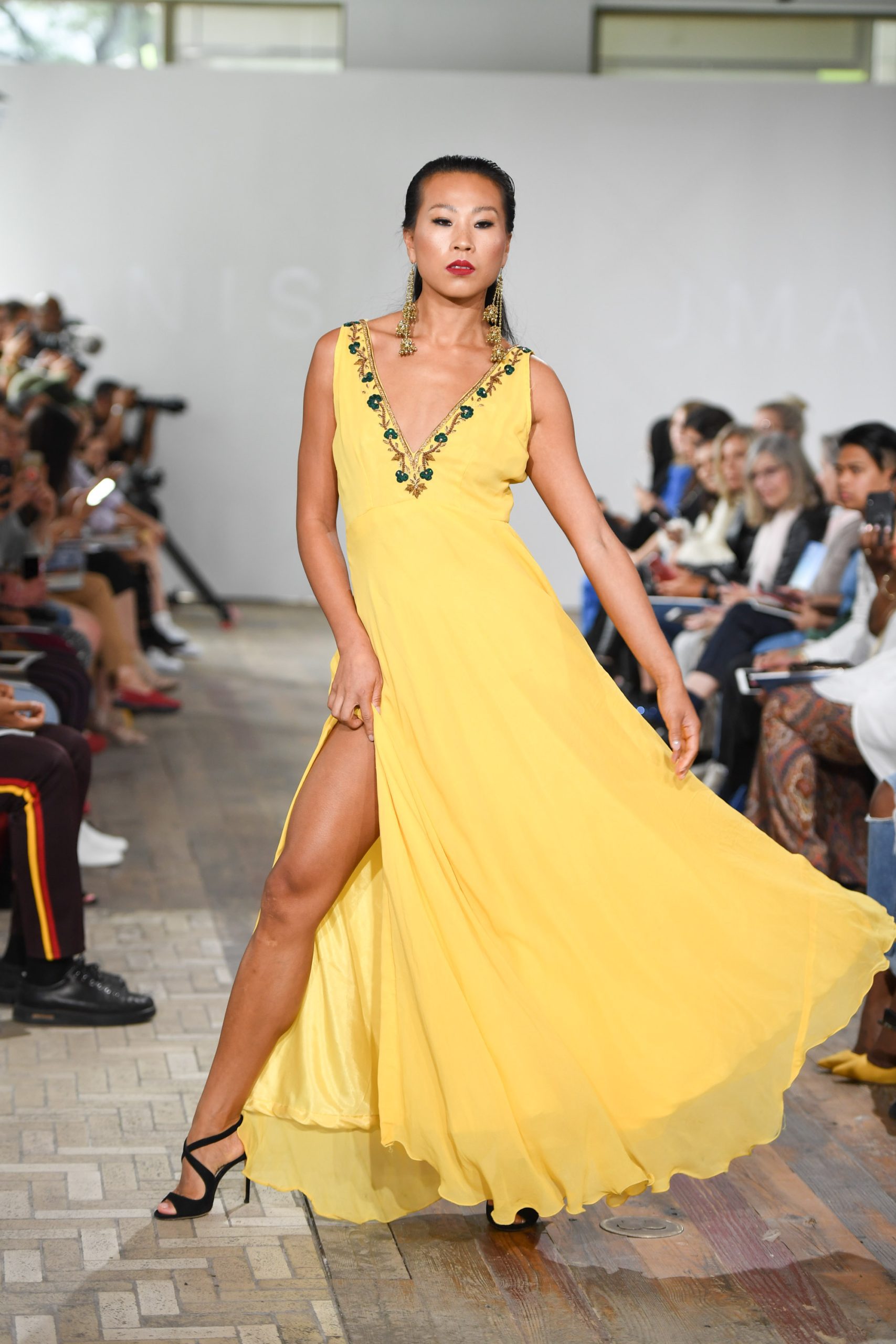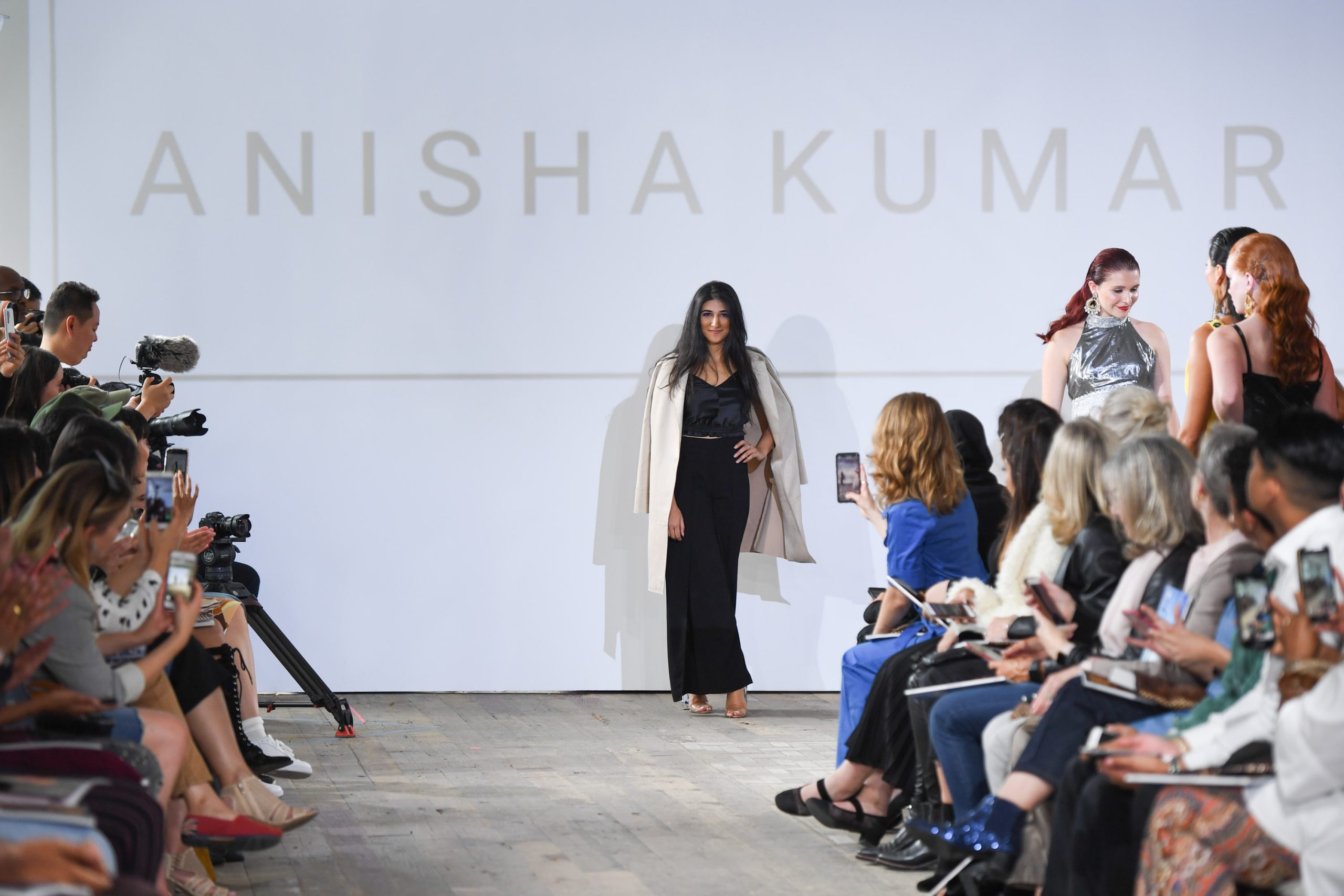We believe in supporting Canadian products, not for the sake of it, but because our nation boasts some of the most top-notch brands and designers in the world. This week we speak to an up-and-coming Indo-Canadian designer who just debuted her first collection at Toronto Fashion Week.
Anisha Kumar admits she didn’t always know she wanted to be in fashion. Playing the coveted MC role at her cousin’s wedding, meant Kumar needed a great outfit for the occasion. Yet, finding an outfit that fit her style, proved more challenging than she thought. Her solution: designing her own.
Wedding guests were impressed when they found out Kumar had designed her own outfit. Following the wedding she was bombarded with requests from people to make pieces. For Kumar, that’s the moment when the prospect of being a designer started to feel a little bit more real.
For now, Kumar works in the business world, but designs part-time. “To fund a dream, if you will,” she explains.
A new face on the scene, this was her first time showing her collection at Toronto Fashion Week. Working through her nerves Kumar shares that she got about 30 minutes of sleep the night before the show. “It’s also a very steep learning curve, especially because this was my first runway show. You learn so much while you’re doing it,” said Kumar.
Anisha Kumar Collection
Her line is reflective of her own story and is broken up into two parts; Part One: The Origin and Part Two: Simplicity. According to Kumar, since fashion is always evolving she wanted to have a very fluid and versatile brand.
Part One: The Origin is where Kumar started her own fashion journey. The line pays homage to her culture and learning experience. Back in 2018 she took a trip to India with her mom, and really got a chance to discover what fashion was like in India, how it intertwined with the culture, and how important it is to the Indian people.
Kumar admits she was never very cultural growing up and didn’t showcase her culture very proudly. While, there were elements of it in her family, describing them as very filtered, she remembers growing up always trying to fit in with the mass majority.
It was on her trip to India that her feelings shifted. “I saw the amount of work that goes into creating one piece. How much attention to detail it requires. The handwork embroidery was what I fell in love with because each bead was stitched on one by one and sometimes they’re such elaborate designs,” said Kumar.
The way this is integrated into the culture and family bonding was also evident to Kumar on her trip. “You see mothers and daughters sitting together, stitching things, and learning the craft. It’s so beautiful,” said Kumar.
Part Two: Simplicity is the transition from the origin into Kumar’s own truth. Her belief that simplicity is beauty, drives the narrative of the second part of the line. “I always felt like the outfit that you wear should highlight and showcase the best parts of you,” said Kumar.


“The idea that the pieces are so simple and versatile, that you can style them any way that you want. You can pair a blouse with jeans, with any sort of accessories, we’ve done combat boots, and leather jackets. People can kind of make it their own,” said Kumar.
It’s all about how you choose to wear the pieces. “I really wanted people to feel like this brand and these clothes could be worn by anybody. It doesn’t matter your ethnicity or your shape or your size,” explains Kumar.
Another overarching theme of her designs is challenging the societal norm of what is considered sexy. Kumar instead chooses to focus her designs on the unconventional. Her designs highlight the collar bone, rib cage, back, and legs.
Her designs are also reminiscent of the early stages when you’re interacting with a person of interest, whether it’s a guy or girl. That period of playfulness and back and forth. Being elusive and subtle by showing a little, but not too much. For example, instead of a corset back she opted to place the corset on the side to expose the rib cage.
The inspiration for highlighting more unconventionally sexy parts of the body comes from Kumar’s own insecurity. “Growing up, you look at your body, and you think about what society sees as beautiful and you feel really crappy about yourself. And you think well I don’t have that part, does that make me less attractive? Well no, because there are so many parts of your body that should be celebrated,” said Kumar.
Kumar wanted to design clothes that she felt she could actually wear out in day-to-day life. Going forward, she wants her designs to be more wearable in North America, perhaps bringing in more neutral colours. Flipping the original idea on it’s head of Indian design with a western twist, Kumar wants to delve deeper into western silhouettes with an Indian aesthetic. This is what women can look forward to in the upcoming Part Three of Kumar’s line.
The goal of her collection is to make women feel confident and beautiful. “When you wear something that makes you feel like that, the world opens up for you,” said Kumar.
Environmentally Sustainable Design




When Kumar was a high school student, she participated in a contest called Trashfusion. “Basically you had to use recycled materials and create a new outfit. That was the first time, I actually showcased something that would be considered fashion. It was so cool because it made you a little more aware of the materials that you were using and being environmentally friendly,” said Kumar.
Kumar is keenly aware of the role designers play in shaping the market. The products, materials and process designers choose, can dictate the direction of a society and community.This is the reason why Kumar thinks it’s important for designers to be aware of the environmental impact their pieces can have.
Since parts of Kumar’s design process cannot be completed in Canada, she has looked to India for outsourcing aspects of design like embroidery.
When Kumar was in India, she visited several places to choose vendors for production. She found the people that she trusted and assessed their work environments. From an ethics perspective, Kumar ensured that everybody that was part of the process was being compensated fairly and has good working conditions. Also ensuring that they minimize waste in their processes and are not using crushed chemicals when they’re dying their fabrics.
“I’m asking the right questions and going out to actually see and build relationships with the people that I’m working with,” said Kumar.








